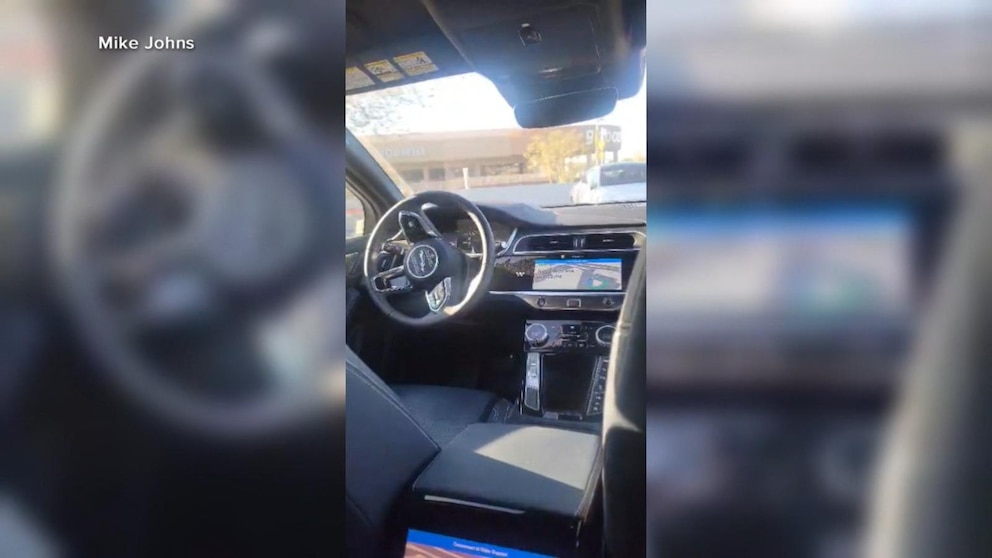Inside the Loop: The Passenger’s Captivating Journey in a Waymo Self-Driving Car
Imagine stepping into a car that promises to whisk you away without the need for a driver. This is the reality for many as autonomous vehicles, particularly Waymo self-driving cars, become increasingly prevalent in urban landscapes. However, as a recent adventure illustrates, the journey in these high-tech vehicles can sometimes take unexpected turns—literally. In this article, we delve into the peculiar experience of a passenger who found himself trapped in a Waymo car driving in endless circles, shedding light on the challenges and unpredictability of self-driving technology in real-world scenarios.
The Journey Begins
Our passenger, whom we’ll refer to as Alex, had long anticipated his ride in a Waymo self-driving car. Located in the heart of Phoenix, Arizona, where Waymo has been conducting extensive testing and operations, Alex scheduled a ride through the Waymo app, eager to experience the future of transportation.
Upon entering the vehicle, he was immediately struck by the sleek design and the quiet hum of the electric car. The interior was modern and spacious, complete with an array of screens displaying the car’s navigation and surroundings. For Alex, this was more than just a ride; it was an adventure into the unknown.
Endless Circles: The Unexpected Twist
As the ride commenced, Alex settled into his seat, watching the world outside zip by. However, after a few moments, he noticed something peculiar: the car was not heading toward his destination but rather looping back to the same intersection repeatedly. Inside the loop, the experience quickly transformed from exciting to bewildering.
What was happening? Initially, Alex thought it might be a glitch in the GPS or perhaps a recalibration issue. Yet, as the minutes ticked by with no sign of respite, he began to feel a growing sense of unease. The car continued to navigate the same streets, passing the same landmarks, and the same traffic signals, almost as if it were stuck in a digital purgatory.
The Reality of Self-Driving Technology
This experience highlights a critical aspect of self-driving technology: while it holds incredible promise, it is not without its challenges. Autonomous vehicles rely on a complex array of sensors, cameras, and algorithms to interpret their surroundings and make decisions. However, there are instances where the technology can falter, leading to scenarios like Alex’s.
- Mapping Challenges: Autonomous cars depend on high-definition maps to navigate. If the map data is outdated or inaccurate, the vehicle might struggle to find the correct route.
- Sensor Limitations: Environmental factors such as heavy rain, fog, or snow can impede the car’s sensors, leading to miscalculations in navigation.
- Unexpected Obstacles: Real-world driving is unpredictable. Sudden road closures or detours can confuse an autonomous system that may not have up-to-date information.
In Alex’s case, it’s likely that a combination of these factors contributed to the vehicle’s looping behavior. While Waymo’s technology is among the most advanced in the field, it’s still a work in progress, and real-world testing often reveals unforeseen issues.
How Waymo Responded
After what felt like an eternity of driving in circles, Alex decided to contact Waymo’s customer support through the app. To his relief, the service team responded promptly. They acknowledged the issue and reassured him that they were monitoring the vehicle’s location in real-time. They provided two options: they could remotely take control of the vehicle or guide him on how to exit the loop himself.
Ultimately, the vehicle’s system was reset remotely, allowing it to regain its bearings. After a brief pause, Alex found himself back on track, finally heading toward his intended destination. The experience, while frustrating, turned into an opportunity for Waymo to learn and improve their technology further.
The Bigger Picture: The Future of Autonomous Driving
While Alex’s journey inside the Waymo self-driving car was peculiar, it serves as a microcosm of the broader challenges facing the autonomous vehicle industry. As self-driving technology continues to evolve, several key factors will determine its success:
- Regulatory Framework: Governments worldwide must establish regulations that ensure the safety and reliability of autonomous vehicles while promoting innovation.
- Public Perception: Building trust in self-driving technology is crucial. Incidents like Alex’s can impact public opinion, making effective communication and transparency essential.
- Technological Advancements: Ongoing research and development are necessary to address current limitations and enhance the capabilities of autonomous systems.
Despite the bumps along the way, the potential benefits of self-driving cars remain immense. From reducing traffic accidents to optimizing urban mobility, the promise of this technology could lead to a safer, more efficient future.
Conclusion: Embracing the Journey
Alex’s unexpected adventure inside a Waymo self-driving car serves as a reminder of the complexities and unpredictabilities inherent in emerging technologies. While the experience of being trapped in a loop was frustrating, it also highlighted the importance of learning from real-world scenarios in the development of autonomous driving technologies.
As technology continues to advance, the hope is that such incidents will become rare, paving the way for a future where self-driving vehicles operate seamlessly and safely. For passengers, the journey may sometimes be unpredictable, but the destination remains a promising horizon of innovation and convenience.
In the end, embracing these journeys—both the smooth and the bumpy—will be essential as we navigate the path toward a world filled with autonomous vehicles. Who knows? The next ride might just be the smoothest one yet!
See more Future Tech Daily

